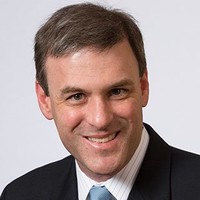
Increased access to the internet and computing devices by individuals and schools have been instrumental to the growth and institutionalization of the movement toward open educational resources (OER), which are learning materials that can be freely downloaded, edited, and shared. Given that technology choices made by organizations, educational institutions, educators, and students who work with OER could amplify or mute its impact, the Hewlett Foundation commissioned an independent, third-party evaluation to better understand the ways in which these choices affect the adoption and effective use of OER. In the following interview, the study’s author, Doug Levin of EdTech Strategies, LLC, spoke with Education Program Officer Angela DeBarger about the evaluation findings and some of the key areas of potential investment in OER technology.
How would you characterize Hewlett Foundation investments to date in OER technical infrastructure? Can you give an illustrative example?
The foundation has a long (albeit modest) history of engagement and direct investment in OER technology and technical infrastructure, although technology-related grants have been largely field-driven. Though the foundation does not have an explicit technology-related strategy to scale OER adoption and use, important work has been done by grantees in building tools and services that benefit learners around the world.
One of the best examples of a direct investment in technology infrastructure for OER is the Ontario College of Art & Design in support of the Flexible Learning for Open Education (FLOE) project. FLOE supports learners, educators and curriculum producers in achieving one-size-fits-one learning design for the full diversity of learners. Technology developed by FLOE is in use by several prominent OER initiatives and the source code for their technology is published on GitHub for other interested parties to evaluate and deploy.
What is the current state of OER technical infrastructure?
This is a difficult question to answer for a few reasons, including the fact that members of the OER community lack a common view of the shared technology-related challenges they are facing, and that end-user expectations about the role of technology in teaching and learning continue to evolve rapidly.
Nonetheless, there are recurring themes to technology investment ideas raised by members of the OER community. These include the desire for (a) better OER authoring and markup tools and metadata standards, including for assessments of learners, (b) automated feedback and analytics tools designed to save faculty time and work, (c) tools to manage the provenance and revision/adaptation of OER, (d) adaptation tools focused on localization (e.g., language translation), and (e) tools and standards to better manage the import/export of OER across file formats and platforms.
Some of these issues are ones that the OER community can address on its own via dialogue and cooperation; others require engagement with the larger ecosystem of digital learning providers who are better positioned to influence the development and adoption of education sector technology standards.
What steps could the Hewlett Foundation take to improve the state of OER technical infrastructure?
The evaluation report concludes with a number of recommendations to help the foundation and the OER field to be more proactive, intentional, and effective in its strategy to leverage technology in support of OER goals. At a high level, three general tactics are likely to be helpful in making progress.
First, given the fact that there are few regularly structured opportunities for members of the OER community to engage in extended and specific dialogue about the shared technology challenges they are facing in growing the movement, I’d argue that creating recurring opportunities for these discussions is foundational to making progress. I think it would be quite beneficial for OER conference organizers, for instance, to create technology-specific tracks in events every year.
Second, given uneven technology capacity across organizations advancing OER, the foundation can play a role in communicating and setting baseline technology and technology-related expectations. These baseline requirements could be modest to begin with (e.g., by requiring grantees to describe how their technological choices of platforms support the goals of the OER movement and the needs of their users) and grow over time to be more directive (e.g., by requiring grantees to support specific interoperability standards or use specific file formats).
Finally, there is no question that further targeted investments could help advance the goals of the OER movement. My belief is that the movement would benefit from tactics that prioritize partnerships with other funders, increased engagement with broader education technical standards efforts, and the iterative development of open solutions that can be freely shared and deployed by large numbers of grantees, organizations, educational institutions, and individual users.
_______
Details on the study and its recommendations can be found in the full report. As the Hewlett Foundation Education team considers how to implement our commitment to promoting agency in teaching and learning as part of our strategy refresh this year, these issues related to technology infrastructure will be critical. The practice of adapting materials to enhance meaning and relevance is core to the goals of equitable pedagogy that cut across both our OER and deeper learning programs, and technology must work in service of these goals. We look forward to collaborating with colleagues and partners to advance the effective use of OER through evidence-based considerations of technology choices, trade-offs, and decision points.




